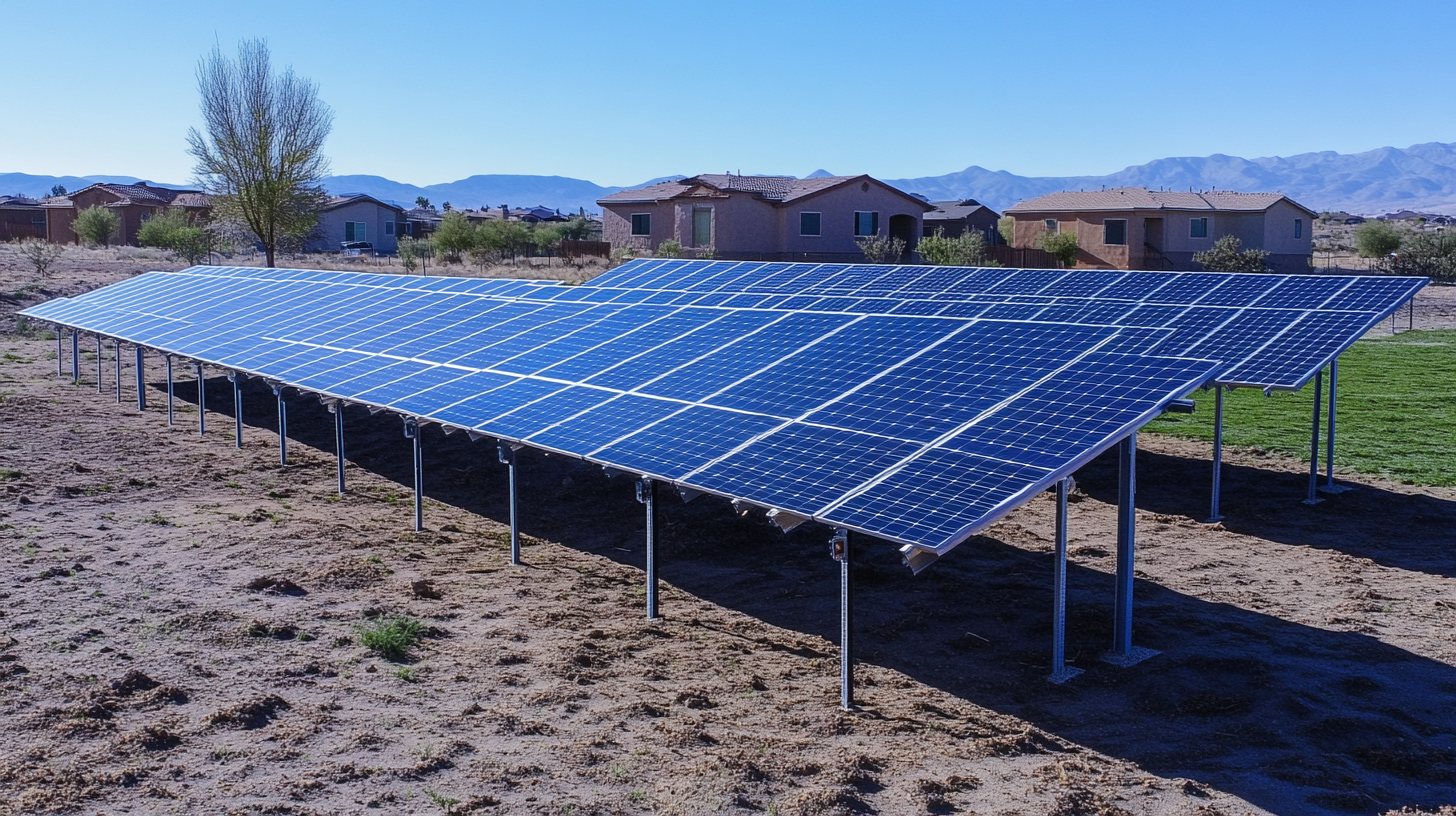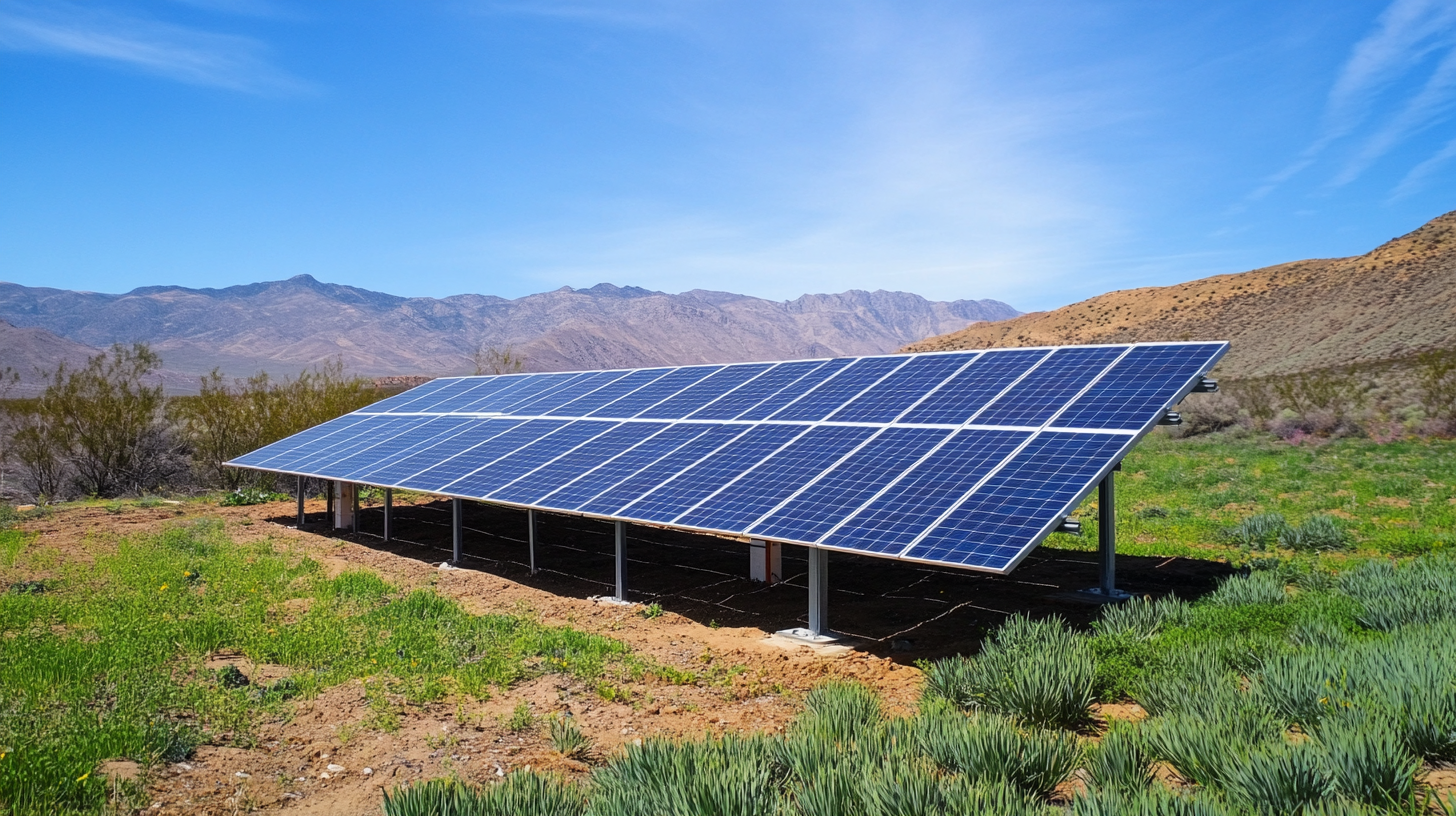 The adoption of renewable energy sources has surged in recent years, with solar power leading the charge as a key player in the global energy transition. Among the various configurations available, a Ground Mount Solar System stands out for its efficiency and capacity to harness maximum sunlight. According to the U.S. Department of Energy, the installation of solar capacity reached a record high in 2021, with ground-mounted systems accounting for nearly 60% of the total installed capacity. This trend underscores the importance of understanding industry standards that govern the design, installation, and maintenance of these systems. Moreover, as the market for solar energy continues to expand, the emphasis on after-sales services and maintenance costs becomes paramount. By prioritizing robust service provisions and identifying cost-effective maintenance strategies, businesses can secure not only their investments but also contribute to sustainable energy solutions for the future.
The adoption of renewable energy sources has surged in recent years, with solar power leading the charge as a key player in the global energy transition. Among the various configurations available, a Ground Mount Solar System stands out for its efficiency and capacity to harness maximum sunlight. According to the U.S. Department of Energy, the installation of solar capacity reached a record high in 2021, with ground-mounted systems accounting for nearly 60% of the total installed capacity. This trend underscores the importance of understanding industry standards that govern the design, installation, and maintenance of these systems. Moreover, as the market for solar energy continues to expand, the emphasis on after-sales services and maintenance costs becomes paramount. By prioritizing robust service provisions and identifying cost-effective maintenance strategies, businesses can secure not only their investments but also contribute to sustainable energy solutions for the future.
As we look towards 2025, ground mount solar systems are set to evolve dramatically, driven by emerging technology trends and industry standards. According to the International Energy Agency, solar capacity is projected to grow by over 70% globally by 2025, with significant investment in advanced mounting solutions that enhance efficiency and reliability. Innovations such as adjustable tilt structures and lightweight materials are not only optimizing energy capture but also reducing installation costs, making solar power more accessible.
Additionally, advancements in tracking technology are poised to revolutionize ground mount installations. Solar trackers, which adjust the angle of panels throughout the day, can increase energy yield by up to 25%, according to recent studies from the National Renewable Energy Laboratory. As these technologies become more mainstream, adopting such systems will not only maximize energy production but also contribute to a more sustainable energy future, positioning stakeholders advantageously as the industry progresses.
In the rapidly evolving solar energy sector, adhering to key industry standards is essential for effective and efficient solar installation practices. Recent developments, such as China's stricter draft investment rules for solar PV manufacturing, indicate a broader trend towards more regulated and quality-focused production processes. As solar installations become more widespread, standards ensure that projects not only meet technical specifications but also contribute to sustainable energy goals. According to Deloitte's 2025 Renewable Energy Industry Outlook, investment in renewable energy technologies is expected to continue growing, illustrating the increasing importance of compliance with industry benchmarks in optimizing economic and technical performance.
Moreover, advancements in solar technology, like the recent breakthroughs in solar cell efficiency, showcase the industry’s commitment to maximizing output while minimizing environmental impact. The integration of bifacial tracking systems is another example of how adherence to innovative practices can significantly enhance energy capture, as highlighted in various industry reports. The Clean Power 2030 Action Plan aims to establish a robust framework for sustainable energy systems, further emphasizing the necessity for solar installations to comply with established standards to ensure efficiency and long-term viability. As the global demand for solar energy surges, prioritizing these standards will be pivotal in achieving both immediate and future energy objectives.

When it comes to optimizing ground mount solar systems, understanding and implementing top strategies is crucial for maximizing energy production. According to the National Renewable Energy Laboratory (NREL), aligning solar panels to capture the maximum sunlight can increase energy yield by 25% or more compared to fixed systems. Utilizing single-axis or dual-axis tracking systems is one effective approach; these systems adjust the angle of the panels throughout the day, maintaining optimal exposure to sunlight. Reports indicate that these tracking systems can enhance efficiency significantly, with dual-axis systems boasting up to a 40% increase in energy production during peak hours.
Furthermore, selecting appropriate locations for ground mount installations is vital. The U.S. Department of Energy suggests that sites with minimal shading from trees or buildings, as well as those that benefit from natural wind patterns, can influence energy generation dramatically. An analysis by Solar Power World underscores the role of soil conditions and installation elevation, recommending that installers consider factors like drainage and temperature variations to optimize the system's performance. By paying close attention to these strategic considerations, solar energy producers can substantially improve the overall output of their ground mount solar systems.
When it comes to building a durable ground mount solar system, the selection of materials is paramount. Materials like galvanized steel and aluminum are frequently favored for their impressive resistance to corrosion and environmental wear. These metals not only ensure longevity but also provide robust support against various weather conditions, making them ideal for solar structures that need to withstand heavy winds and snow loads. Additionally, incorporating high-quality, UV-resistant coatings can enhance the lifespan of these materials, preventing degradation over time.
In terms of design, a well-engineered solar structure includes features that optimize angle and orientation for maximum sunlight exposure. Adjustable mounting systems allow for seasonal variations, ensuring that panels receive the best possible sun exposure throughout the year. Moreover, considering the terrain and soil conditions is essential for presenting a stable foundation. Utilizing deep post installations or concrete footings can mitigate potential shifting and settling, safeguarding against potential damage from movement. By focusing on high-quality materials and thoughtful design, anyone can create a ground mount solar system that stands the test of time and delivers consistent energy output.
| Material | Durability (Years) | Weight (lbs per unit) | Corrosion Resistance | Cost per Unit ($) |
|---|---|---|---|---|
| Aluminum | 25 | 20 | Excellent | 150 |
| Galvanized Steel | 30 | 50 | Good | 200 |
| Stainless Steel | 40 | 30 | Excellent | 250 |
| Concrete | 50 | 80 | Poor | 100 |
| Composite Materials | 20 | 10 | Good | 120 |
As the solar energy landscape evolves, scalability and adaptability emerge as critical considerations in building ground mount solar systems. Future-proofing your solar installation entails designing systems that can accommodate technological advancements and increased energy demands over time. This is especially pertinent given the rapid emergence of new applications, such as AI workloads, which require robust energy solutions. By focusing on scalable infrastructure, solar projects can not only reduce energy costs but also enhance their resilience against market fluctuations.
Moreover, integrating advanced power conversion technologies plays a vital role in elevating the efficiency of ground mount systems. The implementation of improved power conversion systems results in significant leaps toward sustainability, maximizing the output from each kilowatt of energy harnessed. This strategic focus on innovation allows solar installations to not only adapt to current needs but also to embrace future energy shifts, ensuring long-term viability and operational efficiency in a rapidly changing energy landscape. As the industry continues to pursue sustainable solutions, the emphasis on adaptability will be paramount in shaping a dependable energy future.

